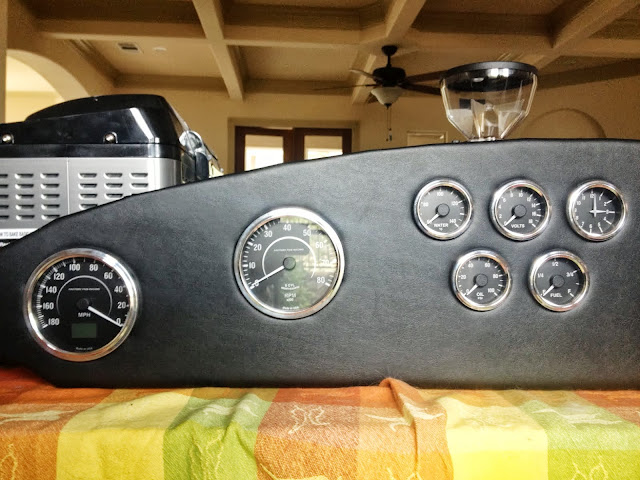This covers a couple of weeks' worth of work.
Here's the first panels installed back on the car. We have got the chassis lifted up on jack stands now, too. Makes for a better working height.

First bits of the front suspension installed.

Shock absorber and brake disc are in place.

Remember the rear axle? Alan had to take the cover off, to attach the rear brake mounting points on the ends of the axles. You can see all the gearing inside.

We manouvered and manhandled the axle underneath the back of the car to get it into place; this was a bit of a task since it weighs about 300 pounds! We shuffled it forward bit by bit, resting on axle stands, until it was close enough to attach all the suspension parts. At this point we were able to jack it up into position, and Lo! it stayed put :-)

Note to other builders: When the manual says to remove all the parts on the chassis before you start building, that includes this panhard frame, bolted on.... the axle has to go above this, OK?

Look, we have pedals! This is the clutch and the brake; the gas pedal comes in a little bit.

Unfortunately Wilwood (who make the pedals) have changed their design. While the new style is stronger, it also now fouls on the chassis. So Alan consulted the Interwebs, and found that folks either cut the chassis or doctor the pedals, to get enough travel. He figured it was less scary to cut the pedal, and easier to buy a new one if it got screwed up, so he took a Dremel to the side of it; you can see the silver cut mark on the lower part of this picture.

Here you can see the master cylinders for the brake pedals (front and rear brakes), and the clutch cable installed. Note to other builders again: See the panel here, in front of the pedals? This was contained in a box, it is not the one that was installed on the car for delivery! They are similar, but not the same. We think they may send ones for different models of car. Make sure you fit the right one...

Onwards!
















